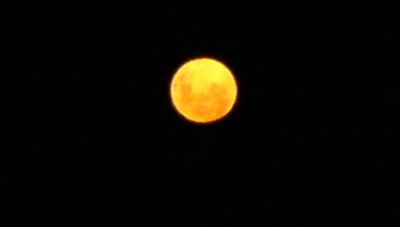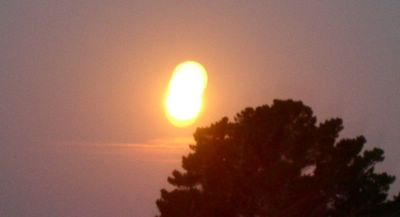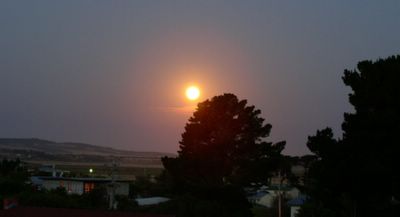So far I have identified two causes
1) I only have 3X optical zoom and that is not really enough to get a reasonably image. I have used my full digital zoom (a further 3X and a bit)and steady the camera on a tripod.
using digital zoom (10X)

2) My autofocus gets very confused when I try to focus on a small light source in total darkness, (you can hear the lens moving in and out and see the image going in and out of focus in the VCD screen) So I have adopted the principal of manual forcus and setting that to infinity.
A surprise when using Night Scene Mode (and 4 second exposure)

Last night I also tried out The Night Scene Mode, which lets to open up to as long as possible ($ seconds seems the longest exposure I every get and the camera adjust the sensitivity (Effective ASA rating) to get an averag exposure. What astounded me was how far the moon moved in 4 seconds!
The moon rises over Lower Tarwin

Don't be discouraged by my attempts, I have seen lots of fine photos of the moon taken with digital cameras. The moral of this post is don't give up and keep experimenting.
No comments:
Post a Comment